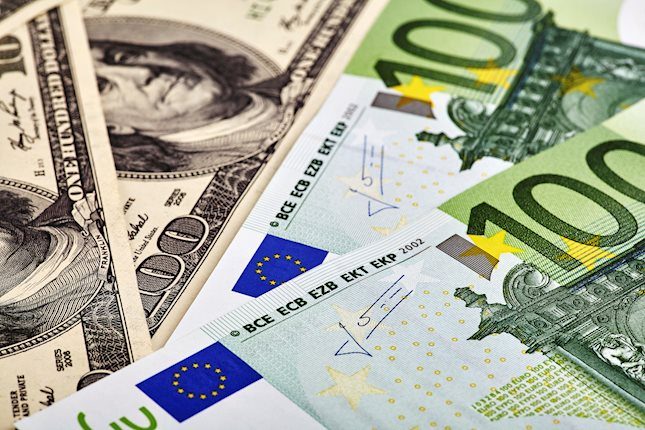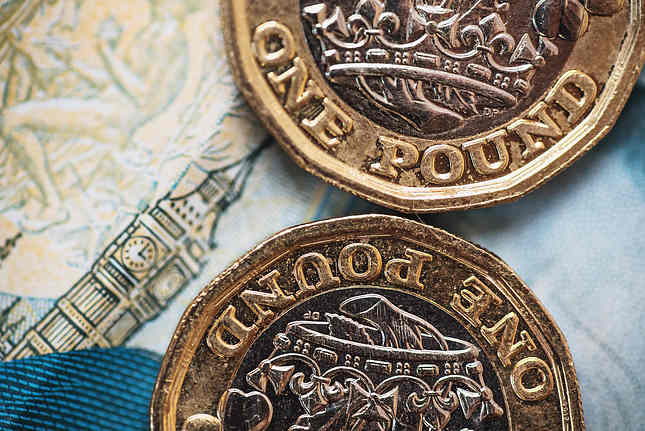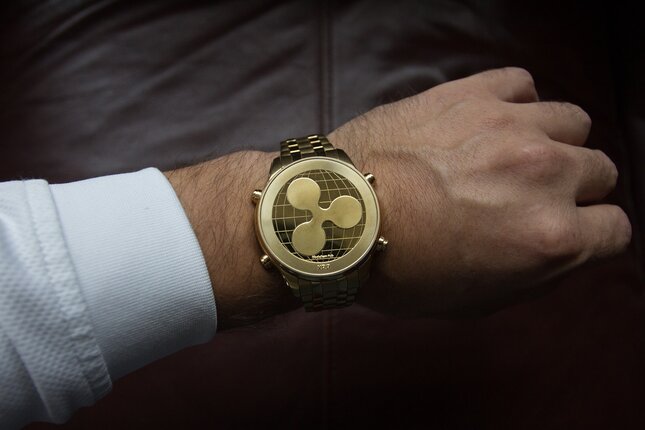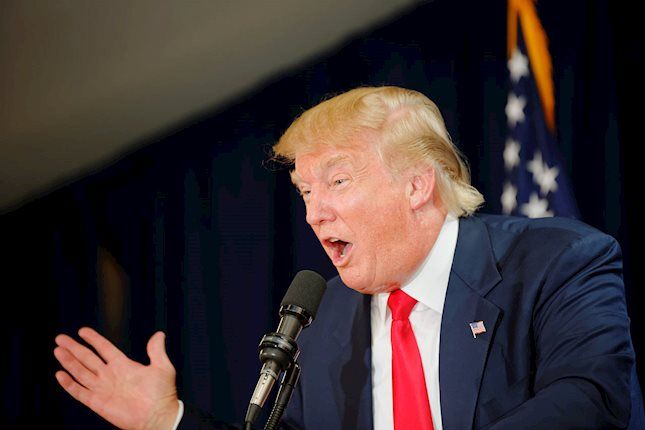- EUR/USD moves sideways above 1.0900 following Wednesday's upsurge.
- ECB is widely expected to leave policy settings unchanged.
- ECB President Lagarde's comments on rate outlook could influence the Euro's valuation.
EUR/USD extended its weekly rally and touched its highest level since mid-March near 1.0950 on Wednesday. The pair stays in a consolidation phase below this level as investors wait for the European Central Bank (ECB) to announce monetary policy decisions.
Euro PRICE This week
The table below shows the percentage change of Euro (EUR) against listed major currencies this week. Euro was the strongest against the New Zealand Dollar.
| USD | EUR | GBP | JPY | CAD | AUD | NZD | CHF | |
|---|---|---|---|---|---|---|---|---|
| USD | -0.24% | -0.01% | -1.06% | 0.22% | 0.69% | 0.57% | -1.17% | |
| EUR | 0.24% | 0.26% | -0.63% | 0.65% | 0.96% | 1.01% | -0.73% | |
| GBP | 0.00% | -0.26% | -0.79% | 0.39% | 0.70% | 0.70% | -1.00% | |
| JPY | 1.06% | 0.63% | 0.79% | 1.29% | 1.55% | 1.61% | -0.30% | |
| CAD | -0.22% | -0.65% | -0.39% | -1.29% | 0.40% | 0.35% | -1.40% | |
| AUD | -0.69% | -0.96% | -0.70% | -1.55% | -0.40% | 0.03% | -1.69% | |
| NZD | -0.57% | -1.01% | -0.70% | -1.61% | -0.35% | -0.03% | -1.74% | |
| CHF | 1.17% | 0.73% | 1.00% | 0.30% | 1.40% | 1.69% | 1.74% |
The heat map shows percentage changes of major currencies against each other. The base currency is picked from the left column, while the quote currency is picked from the top row. For example, if you pick the Euro from the left column and move along the horizontal line to the US Dollar, the percentage change displayed in the box will represent EUR (base)/USD (quote).
The persistent selling pressure surrounding the US Dollar (USD) fuelled another leg higher in EUR/USD midweek. In the absence of high-tier data releases, dovish comments from Federal Reserve (Fed) officials didn't allow the USD to stage a rebound.
The ECB is widely expected to leave monetary policy settings unchanged after having lowered key rates by 25 basis points in June.
Investors will scrutinize the statement language and comments from ECB President Christine Lagarde in the post-meeting press conference to figure out whether the ECB will lower key rates again in September.
In case Lagarde adopts an optimistic tone regarding the inflation outlook, the Euro could come under selling pressure even if she refrains from confirming a rate cut in September. On the other hand, the Euro could stay resilient against its rivals if Lagarde reiterates the data-dependent approach and voices concerns over upside risks to inflation.
The US economic docket will feature weekly Initial Jobless Claims data, which is forecast to come in at 230,000 following the 222,000 reported in the previous week. A reading above the market expectation could make it difficult for the USD to find demand, while a print below 220,000 could have the opposite impact on the USD valuation.
EUR/USD Technical Analysis
EUR/USD stays within the ascending regression channel coming from late June and the Relative Strength Index (RSI) indicator on the 4-hour chart holds above 60, suggesting that the pair remains technically bullish.
EUR/USD could face first resistance at 1.0950 (static level, mid-point of the ascending channel) before 1.0980 (upper limit of the ascending channel), 1.1000 (psychological level, static level) and 1.1030 (static level). On the downside, the lower limit of the ascending channel forms key support at 1.0900 ahead of 1.0870 (50-period Simple Moving Average) and 1.0840 (static level).
ECB FAQs
The European Central Bank (ECB) in Frankfurt, Germany, is the reserve bank for the Eurozone. The ECB sets interest rates and manages monetary policy for the region. The ECB primary mandate is to maintain price stability, which means keeping inflation at around 2%. Its primary tool for achieving this is by raising or lowering interest rates. Relatively high interest rates will usually result in a stronger Euro and vice versa. The ECB Governing Council makes monetary policy decisions at meetings held eight times a year. Decisions are made by heads of the Eurozone national banks and six permanent members, including the President of the ECB, Christine Lagarde.
In extreme situations, the European Central Bank can enact a policy tool called Quantitative Easing. QE is the process by which the ECB prints Euros and uses them to buy assets – usually government or corporate bonds – from banks and other financial institutions. QE usually results in a weaker Euro. QE is a last resort when simply lowering interest rates is unlikely to achieve the objective of price stability. The ECB used it during the Great Financial Crisis in 2009-11, in 2015 when inflation remained stubbornly low, as well as during the covid pandemic.
Quantitative tightening (QT) is the reverse of QE. It is undertaken after QE when an economic recovery is underway and inflation starts rising. Whilst in QE the European Central Bank (ECB) purchases government and corporate bonds from financial institutions to provide them with liquidity, in QT the ECB stops buying more bonds, and stops reinvesting the principal maturing on the bonds it already holds. It is usually positive (or bullish) for the Euro.
Information on these pages contains forward-looking statements that involve risks and uncertainties. Markets and instruments profiled on this page are for informational purposes only and should not in any way come across as a recommendation to buy or sell in these assets. You should do your own thorough research before making any investment decisions. FXStreet does not in any way guarantee that this information is free from mistakes, errors, or material misstatements. It also does not guarantee that this information is of a timely nature. Investing in Open Markets involves a great deal of risk, including the loss of all or a portion of your investment, as well as emotional distress. All risks, losses and costs associated with investing, including total loss of principal, are your responsibility. The views and opinions expressed in this article are those of the authors and do not necessarily reflect the official policy or position of FXStreet nor its advertisers. The author will not be held responsible for information that is found at the end of links posted on this page.
If not otherwise explicitly mentioned in the body of the article, at the time of writing, the author has no position in any stock mentioned in this article and no business relationship with any company mentioned. The author has not received compensation for writing this article, other than from FXStreet.
FXStreet and the author do not provide personalized recommendations. The author makes no representations as to the accuracy, completeness, or suitability of this information. FXStreet and the author will not be liable for any errors, omissions or any losses, injuries or damages arising from this information and its display or use. Errors and omissions excepted.
The author and FXStreet are not registered investment advisors and nothing in this article is intended to be investment advice.
Recommended Content
Editors’ Picks

EUR/USD sits at yearly lows near 1.0550 ahead of EU GDP, US PPI data
EUR/USD is trading near 1.0550 in the European session on Thursday, sitting at the lowest level in a year. The Trump trades-driven relentless US Dollar buying and German political instability weigh on the pair. Traders await EU GDP data and US PPI report ahead of Fed Chair Powell's speech.

GBP/USD holds losses below 1.2700 on sustained US Dollar strength
GBP/USD is holding losses near multi-month lows below 1.2700 in European trading on Thursday. The pair remains vulnerable amid a broadly firmer US Dollar and softer risk tone even as BoE policymakers stick to a cautious stance on policy. Speeches from Powell and Bailey are eyed.

Gold price hits fresh two-month low as the post-election USD rally remains uninterrupted
Gold price drifts lower for the fifth consecutive day and drops to its lowest level since September 19, around the $2,554-2,553 region heading into the European session on Thursday. The commodity continues to be weighed down by an extension of the US Dollar's post-election rally to a fresh year-to-date.

XRP struggles near $0.7440, could still sustain rally after Robinhood listing
Ripple's XRP is trading near $0.6900, down nearly 3% on Wednesday, as declining open interest could extend its price correction. However, other on-chain metrics point to a long-term bullish setup.

Trump vs CPI
US CPI for October was exactly in line with expectations. The headline rate of CPI rose to 2.6% YoY from 2.4% YoY in September. The core rate remained steady at 3.3%. The detail of the report shows that the shelter index rose by 0.4% on the month, which accounted for 50% of the increase in all items on a monthly basis.

Best Forex Brokers with Low Spreads
VERIFIED Low spreads are crucial for reducing trading costs. Explore top Forex brokers offering competitive spreads and high leverage. Compare options for EUR/USD, GBP/USD, USD/JPY, and Gold.
